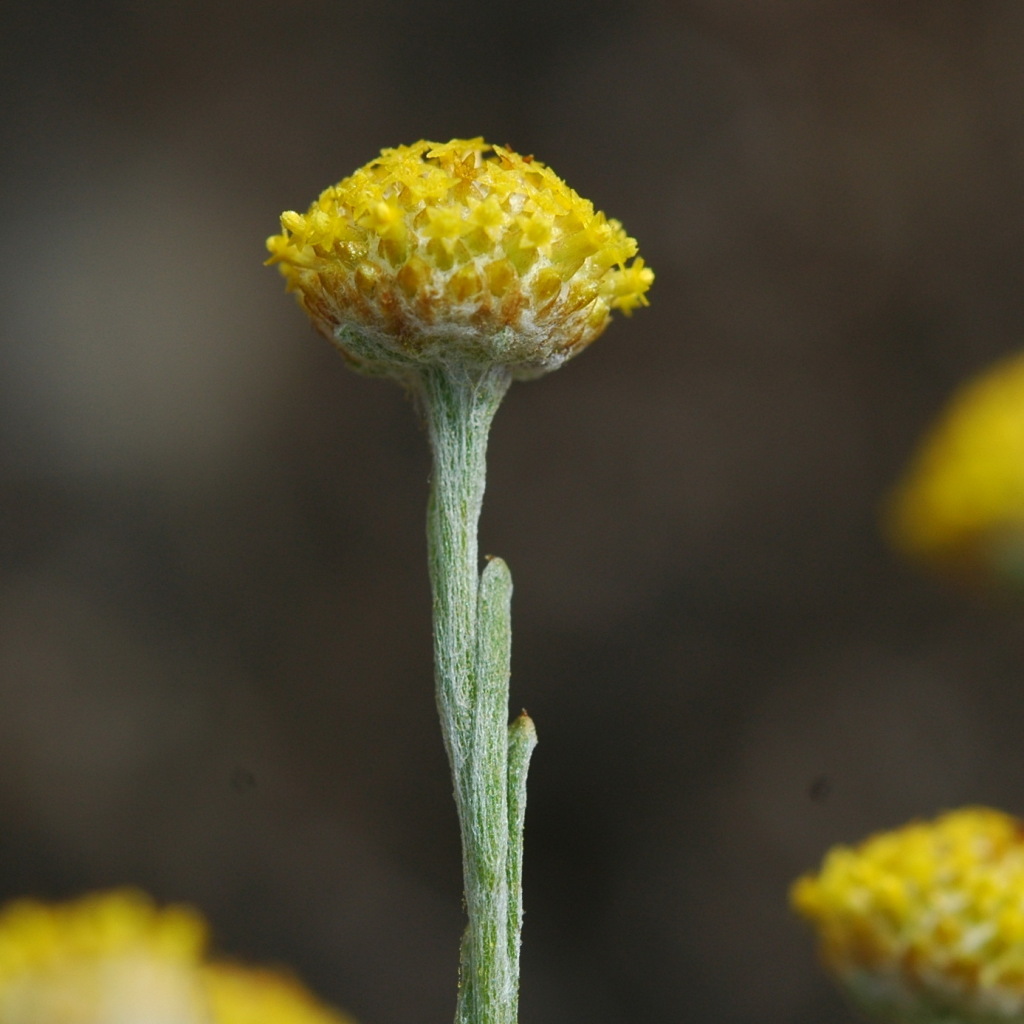Trichanthodium
Simple or branched annual herbs, glabrous, lanate or tomentose. Leaves mainly alternate but the lowermost pairs opposite, sessile, entire, usually with a slight mucro, the uppermost with a hyaline apex. Inflorescences of compound heads; bracts subtending compound heads inconspicuous or the outer ones c. equal to the head; general receptacle flat to convex, glabrous or with long bristles. Capitula discoid, homogamous; involucral bracts 1- or 2-seriate, flat to conduplicate, primarily hyaline and yellow in the upper part but at least those of the outer row with a distinct, opaque midrib. Florets 1 per capitulum, bisexual; corolla tubular, 5-lobed, yellow; style branches truncate; stamens 5, anthers tailed. Cypselas obovoid, often somewhat flattened, covered in mucilage-producing cells; pappus an entire, truncate cup or a laciniate ring or cup.
An endemic Australian genus of 4 species.
Short, P.S. (1999). Trichanthodium. In: Walsh, N.G.; Entwisle, T.J., Flora of Victoria Vol. 4, Cornaceae to Asteraceae, pp. 815–816. Inkata Press, Melbourne.
 Spinning
Spinning

